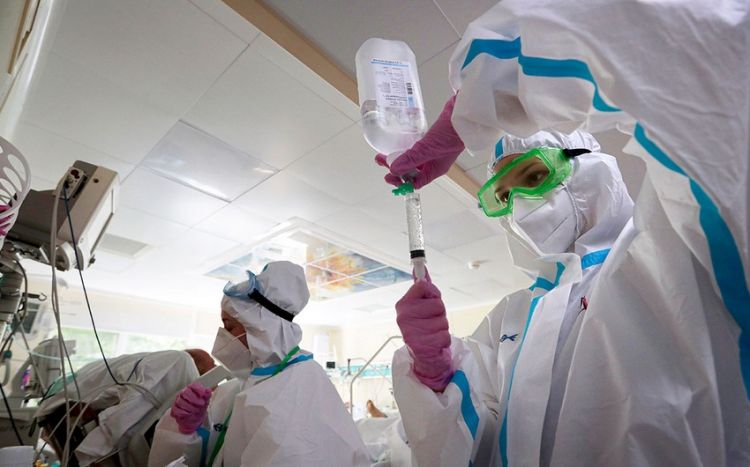Genetic material collected at a Chinese market near where the first human cases of COVID-19 were identified show raccoon dog DNA comingled with the virus, adding evidence to the theory that the virus originated from animals, not from a lab, international experts say, Ednews reports citing the Associated Press.
“These data do not provide a definitive answer to how the pandemic began, but every piece of data is important to moving us closer to that answer,” World Health Organization Director-General Tedros Adhanom Ghebreyesus said.
How the coronavirus emerged remains unclear. Many scientists believe it most likely jumped from animals to people, as many other viruses have in the past, at a wildlife market in Wuhan, China. But Wuhan is home to several labs involved in collecting and studying coronaviruses, fueling theories scientists say are plausible that the virus may have leaked from one.
The new findings do not settle the question, and they have not been formally reviewed by other experts or published in a peer-reviewed journal.
Tedros criticized China for not sharing the genetic information earlier, telling a press briefing that “this data could have and should have been shared three years ago.”
The samples were collected from surfaces at the Huanan seafood market in early 2020 in Wuhan, where the first human cases of COVID-19 were found in late 2019.
Tedros said the genetic sequences were recently uploaded to the world’s biggest public virus database by scientists at the Chinese Center for Disease Control and Prevention.
They were then removed, but not before a French biologist spotted the information by chance and shared it with a group of scientists based outside China that’s looking into the origins of the coronavirus.
The data show that some of the COVID-positive samples collected from a stall known to be involved in the wildlife trade also contained raccoon dog genes, indicating the animals may have been infected by the virus, according to the scientists. Their analysis was first reported in The Atlantic.
“There’s a good chance that the animals that deposited that DNA also deposited the virus,” said Stephen Goldstein, a virologist at the University of Utah who was involved in analyzing the data. “If you were to go and do environmental sampling in the aftermath of a zoonotic spillover event … this is basically exactly what you would expect to find.”
The canines, named for their raccoon-like faces, are often bred for their fur and sold for meat in animal markets across China.
WHO’s COVID-19 technical lead, Maria Van Kerkhove, cautioned that the analysis did not find the virus within any animal, nor did it find any hard evidence that any animals infected humans.
“What this does provide is clues to help us understand what may have happened,” she said. The international group also told WHO they found DNA from other animals as well as raccoon dogs in the samples from the seafood market, she added.
The coronavirus’ genetic code is strikingly similar to that of bat coronaviruses, and many scientists suspect COVID-19 jumped into humans either directly from a bat or via an intermediary animal like pangolins, ferrets or racoon dogs.
Efforts to determine the origins of the COVID-19 pandemic have been complicated by factors including the massive surge of human infections in the pandemic’s first two years and an increasingly bitter political dispute.
It took virus experts more than a dozen years to pinpoint the animal origin of SARS, a related virus.
Goldstein and his colleagues say their analysis is the first solid indication that there may have been wildlife infected with the coronavirus at the market. But it is also possible that humans brought the virus to the market and infected the raccoon dogs, or that infected humans simply happened to leave traces of the virus near the animals.










